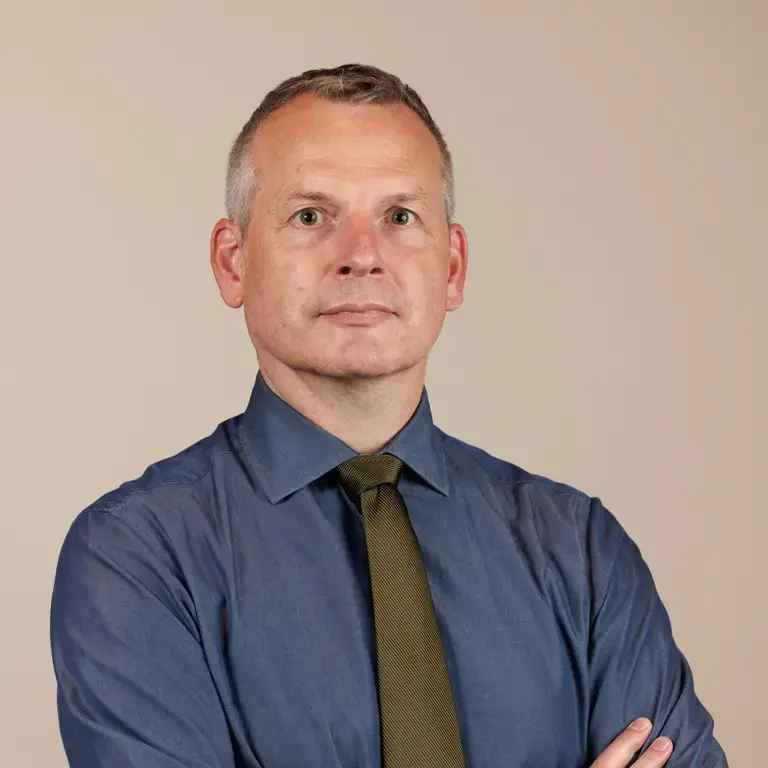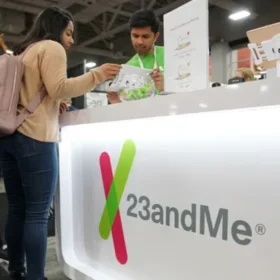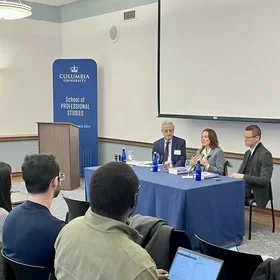IKNS Program Director Christoph Meinrenken on human(e) intelligence and town and gown’s shared responsibility to our collective ingenuity
In high school, my teacher had us read The Physicists, Friedrich Dürrenmatt’s 1961 play about three scientists in a mental institution. A common interpretation of the play focuses on scientists’ responsibility for how the world ultimately uses the fruit of their work. This is easily illustrated here on Columbia’s campus: The Manhattan Project, also known as the U.S. atomic bomb, started in the proverbial ivory tower—in Pupin Hall, right behind me. The project then left the world of academia and progressed from theory to reality in Los Alamos, New Mexico. The product of all this work—by academics, civilians, and the military—eventually found itself in the belly of an aircraft in the skies over Japan.
As with the “town and gown” concept at universities, the play sees the three scientists—or “academics in gowns” more generally—as a priori distinct from the rest of us, even as it fiercely argues that scientists have an innate responsibility for the world around them.
These days, academic institutions rightly emphasize the countless creations from inside the ivory tower—and the benefits (mostly) that this work brings to all of us. But as catchy as the “town and gown” concept is, where research and development actually happen can never be so clearly delineated. I would guess that the first inklings of the famous formula behind the atomic bomb, E = mc², were already in Albert Einstein’s beautiful brain—or should I say his neural network?—when he was still working as a clerk at the local patent office, far away from any ivory towers.
Alan Turing, often deemed the grandfather of AI—or at least modern computing more generally—is another of many examples. Yes, he did work at Cambridge and Princeton. But Turing also fine-tuned much of his work outside academia, namely when he helped the world defeat Nazi Germany.
Sticking with the theme of AI: Decades later, six of the eight authors of the seminal paper that demonstrated how AI can work out what a cat looks like (Le et al., 2012) listed themselves with their google.com affiliation, leaving only two of the eight with stanford.edu.
In other words, one might argue that the walls separating town from gown were never high—we all create together. To take it one step further, some people might wonder: What are academic institutions really needed for when we have healthy R&D in the private sector?
I believe that we collectively create—whether in the private sector or academia, on the town or gown side—and are therefore collectively responsible for how we use and abuse the fruits of our ingenuity.
And I believe it is here—in the responsible use and prevention of abuse—that education becomes crucial.
In the graduate degree I direct at Columbia, Information and Knowledge Strategy (IKNS), we think a lot about neural networks—not just the artificial one we employ in the cloud to power AI but also the human one we nurture between our ears. We also think a lot about how this human intelligence hopefully guides us as we use the powerful tools that AI, its artificial cousin, enables.
When I started my Ph.D. in neuroscience, I told my adviser I wanted to study how the neural network in our brain works at a systems level. Luckily, my adviser tamed my arrogance and told me I should perhaps start small and study a single neuron and how it communicates with the ones around it. “Try to understand some basic building blocks before tackling how they all work in concert,” he wisely told me.
To this day, we still don’t always fully understand how a neural network actually works. Indeed, the more accurate the algorithms we run on a network, the less we tend to understand them. How exactly do they devise highly effective misinformation campaigns? And how exactly does that misinformation get unleashed, with uncanny accuracy, on the cellphones of unsuspecting humans as we click through the daily news, creating echo chambers of previously unseen speed and scale?
But while we may not know how exactly the algorithms do it, we most certainly know how effective they are. So effective, in fact, that they are worth hundreds of millions of dollars to those in the business of spreading misinformation. And we know from our history books—from ancient Rome to World War II—what’s at risk when people are played.
As one of the three protagonists in Dürrenmatt’s play says: “A story is not finished until it has taken the worst turn.”
So all of our work, whether inside or outside academia, comes with enormous responsibility: the responsibility to provide all of us with a level of critical thinking that can inoculate us from the onslaught of misinformation unleashed on us—or, better yet, to teach us enough ethical backbone and respect for history to make us abstain from such abuse in the first place.
On April 10, IKNS will team up with Columbia’s Master of Human Capital Management and the Master of Science in Negotiation and Conflict Resolution to address “Leadership in a Turbulent World.” For fear of not knowing quite what to say about the timely topic, I asked Tameka Vasquez, one of our many incredibly accomplished alums, to represent IKNS on the panel.
Still, thinking about Dürrenmatt’s play and my own life inside and outside academia helps me articulate what I might have said on April 10. Dürrenmatt writes: “What concerns everyone, only everyone [together] can solve.”
So I wonder: Can we manage—through education in and outside ivory towers, through the study of history, in theaters, art, culture, and journalism, and in families—to employ information science ethically and to keep us human(e) enough so we know when it is abused?
My high school teacher certainly hoped so.
Views and opinions expressed here are those of the authors, and do not necessarily reflect the official position of Columbia School of Professional Studies or Columbia University.
About the Program
The Columbia University M.S. in Information & Knowledge Strategy (IKNS) degree provides students with foundations in information science, organizational psychology, and change management as well as practical skills in project management and executive leadership.
The STEM-accredited program is available full-time or part-time, online or in person, on Columbia’s landmarked campus right here in New York City. To maximize opportunities for networking and community building, our online students join our New York–based students on Columbia’s campus for three in-person residencies during their studies.
Students train under world-class faculty, including former and current executives from Google, IBM, NASA, and Oliver Wyman, and join a powerful global alumni network in coveted positions, including at Alphabet, Goldman Sachs, Nike, Pfizer, and the World Bank.
For more IKNS insights, news, and events, please go to our website, connect with us on LinkedIn, or attend one of our online info sessions. Visit the School of Professional Studies website to learn more about the SPS student experience.
The final fall 2025 application deadline for the IKNS program is June 1. Learn more here.



